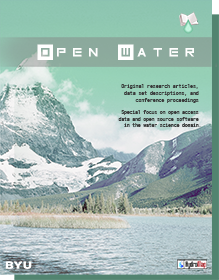Keywords
Erosion, Soil Conservation, Cost-Benefit Analysis, Sediment, Best Management Practices, Horn of Africa, East Africa
Abstract
The current severity of gully erosion is a major cause of increased sediment loads in rivers, but gully rehabilitation has proven to be challenging, with limited success. This paper describes gully rehabilitation efforts in the Ene-Chilala in the Blue Nile basin begun in early 2013, where low-cost gully rehabilitation has been effective with community participation. Initially farmers were reluctant to participate for religious reasons but with the aid of local priests and respected elders, community discussions and a visit to a rehabilitated gully, a consensus was reached to rehabilitate a 0.71-ha upland gully. The gully cut the foot path of 51 household head farmers; the time value cost of this gully erosion on local farmers by disrupting the foot path and enforce them to use an alternative road that increase their travel by 44 minutes was 33, 138 ETB y-1. The participatory rehabilitation measures consisted of regrading the gully head at 450, constructing low-cost check dams from locally available materials, and planting Pennisetumpurpureum grass and Sesbaniasesban. At the end of the first rainy season after implementation, 2300 tons of soil was conserved by the newly planted vegetation, compared with soil losses of 1900 and 1500 tons in two untreated, nearby gullies.
In 2014, an additional 3300 tons of soil was conserved. The marginal rate of return on the gully rehabilitation investment was 2.5 based on the value of increased forage production alone. The success of this effort motivated farmers to voluntarily under take rehabilitation of five other gullies in the area.
BYU ScholarsArchive Citation
Ayele, Getaneh K.; Gessess, Azalu A.; Addisie, Meseret B.; Tilahun, Seifu A.; Tebebu, Tigist Y.; Tenessa, Daregot B.; Langendoen, Eddy J.; Nicholson, Charles F.; and Steenhuis, Tammo S.
(2015)
"Economic valuation on participatory gully rehabilitation in the Ethiopian highlands,"
Open Water Journal: Vol. 3:
Iss.
1, Article 4.
Available at:
https://scholarsarchive.byu.edu/openwater/vol3/iss1/4
